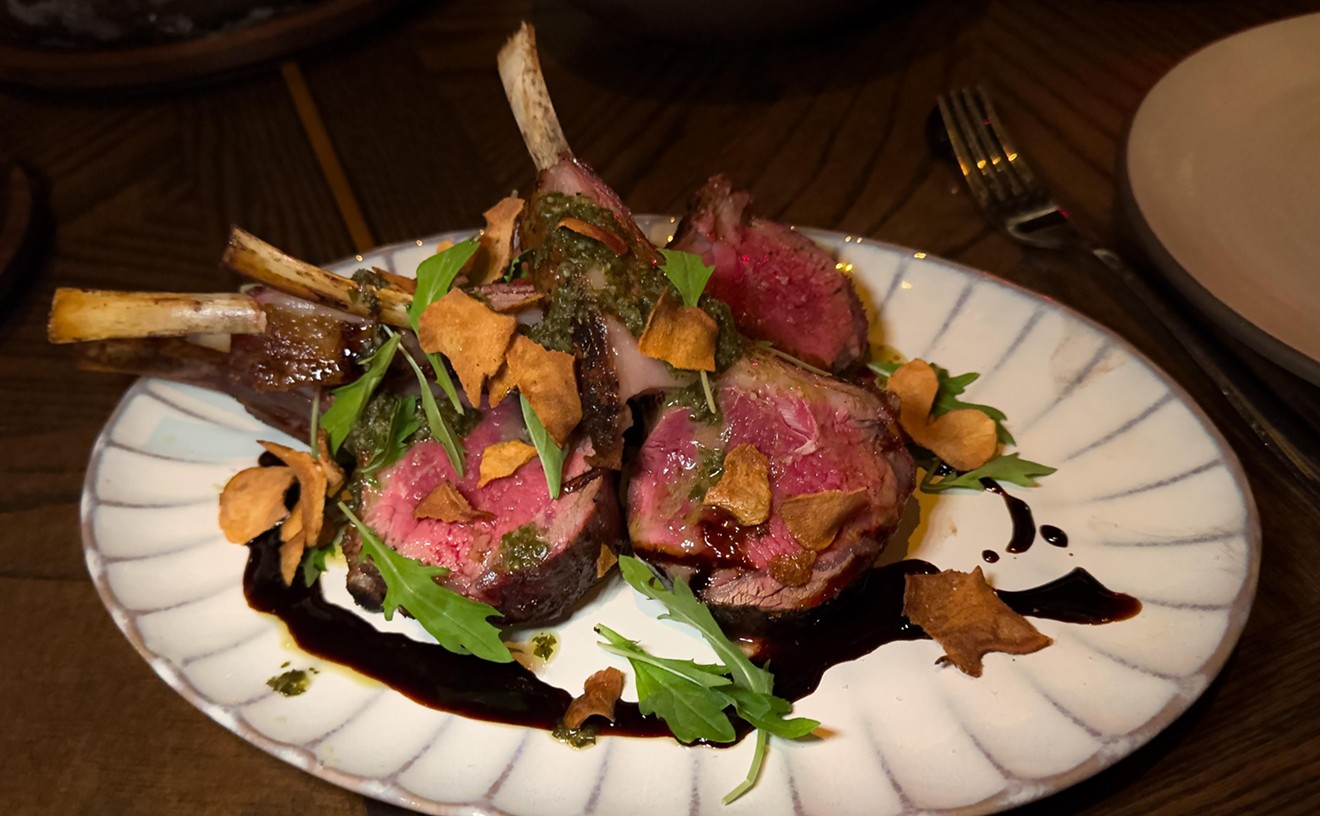Happy New Year, Phoenix! What, you've already broken all your resolutions? Yeah, us too. But we're bouncing back with some inspiration. Whether you've been considering a new hair style or a new kitchen project, we're here to help with Project PHX, our annual "how to" guide. Step into Pane Bianco's kitchen to learn how to pull mozzarella. Or brew beer, crochet dread locks, learn how to build an electric guitar and make a screen print. Five local experts are here to guide you. Today: Pulling mozzarella with Robbie Tutlewski.
See also: Project Phoenix: Brewing Beer with Dennis Mitchell of the Arizona Society of Homebrewers
It's pretty much a rite of passage in Phoenix to get a mozzarella, tomato, and basil sandwich from Pane Bianco. Chris Bianco's little sandwich shop on Central Avenue between Indian School and Camelback roads offers only three sandwiches every day, after all, and that's one of them. While the aromatic basil and juicy local tomatoes with a drizzle of olive oil and a sprinkle of salt and pepper certainly play a role in its popularity, the fresh slab of mozzarella is definitely the star of the show in this sandwich.
You already might have known that the crew at Pane Bianco makes its own mozzarella, but you might not know that the restaurant's sizable back of house operates as both a commissary and a test kitchen for Bianco's other restaurants in town. At the helm, chef Robbie Tutlewski is free to experiment. Lately, that means making and curing his own salami, pancetta, breasola, and mortadella in house, but since the beginning of Pizzeria Bianco, which celebrated its 20th year in operation in November 2014, Bianco has been making mozzarella in-house.
Tutlewski says making fresh mozzarella is the hallmark of a good Italian restaurant, and that's why it's important for Pane to always make its fresh.
"It's like a pizza place not offering a margherita pizza," Tutlewski says.
It's also about making everything to the restaurant's standards, too, though. He explains that by making its own mozzarella, the restaurant has much greater control over the product that it's selling, from the cheese's fat and salt levels to the freshness of product, in general.
"We want to push ourselves and challenge ourselves to always do more, and this way, we know it hasn't been sitting on a shelf for a week," he says. "Plus, we just like our own style." Tutlewski says that store-bought pre-made mozzarellas typically are brined. Though some might like the bit of added saltiness, sitting in cold, salted water for extended periods of time causes mozzarella to form a tough outer layer. That's why you might have noticed the mozzarella at Bianco spots is a lot creamier and softer than what you'd buy for yourself.
However, that creamy flavor also is a Bianco trademark. Though some fresh mozzarella makers might add more salt or choose a curd with less milk fat, Tutlewski says they aim for a fior di latte-style of mozzarella, the flavor of which, he says, should be similar a glass of milk.
The first step to making excellent mozzarella, according to Tutlewski, is sourcing the best curd, which is the milk solid that is left over after it has been separated from the whey. For Bianco restaurants, that means it has to be handmade artisan curd. Though Bianco prefers to source locally, Tutlewski says, it's also important to pick the optimum product, which sometimes means going through out-of-state purveyors during certain times of the year.
He wouldn't say where Bianco usually buys curd (after all, some things do have to stay secret), but Tutlewski recommends looking up your favorite mozzarella maker from your local grocer and seeing if it sells curd. BelGioioso and Di Stefano are two of his favorite mozzarella makers, though neither expressly offers curd retail.
You can buy 10 pounds of curd for $50 from Di Bruno through its online website, though delivery might be pricey since it doesn't ship the fresh curd via ground mail to the western United States. Golden Age Cheese from New York sells eight pounds for about $65 and will ship ground for about $20. Or you can make it yourself, though that will take a few more steps.
Along with all the bread, pizza dough, cakes, and other desserts, the crew at Pane Bianco makes mozzarella for the three Phoenix-area Bianco restaurants daily. He admits he only "dabbled in fresh cheeses" such as ricotta before starting work at Pane and never produced cheese in volume; now Tutlewski estimates that he prepares 260 pounds of mozzarella daily.
Although Bianco recipes and ratios typically are kept close to the vest among the crew that works there, Tutlewski says, they're always happy to show anyone how food processes work.
"If you come in and you work hard, and you're not trying to screw anyone else over," Tutlewski says, "we'll tell anyone anything."
With that, Tutlewski puts on a pair of gloves and begins cutting into an eight-pound slab of mozzarella curd.
How to Make Mozzarella Cheese
Slice eight pounds of curd into smaller pieces about the size of a fist. (You can order curds at dibruno.com.)
Place the curds into a large bowl.
Bring two pots of water to 180 degrees.
Pour one cup of salt over the curd.
Pour the first pot of hot water over the curd until it is covered, with about an inch of water over top. This step is called a wash. Let sit for approximately 15 minutes, being careful not to stir too much because stirring causes the milk fat to dissipate from the curd into the water. However, you do want to be sure all the curd is getting hot water and salt.
• Carefully dump the water out from your curd. At this point, it should look as though it has begun to melt somewhat.
• Pour the second pot of hot water onto the melting curd for a second wash. Dump most of the water out once the mozzarella is glossy and forms one solid piece. You can choose to do another wash if this hasn't happened, but you will lose more milk fat with each wash you do.
• At this point, you can either leave the mozzarella in the solid piece in room-temperature water (cold water will cause the cheese to seize up) or you can use the cut-and-pull method to form smaller mozzarella balls.
• To cut and pull, simply fold the mozzarella in over itself until you have the desired size of ball. For added creaminess and moisture, try to incorporate some of the milky water into pockets in the cheese while you do this step.
• Once you have a ball of mozzarella pulled to the size you prefer, twist the ball until it detaches from the rest of the mozzarella piece. It will be hot, so you might want a pan of ice water nearby in which to dunk your hands between pulls.
• Place in room-temperature water and then transfer it to the fridge. Allow the mozzarella to sit for at least 40 minutes.











